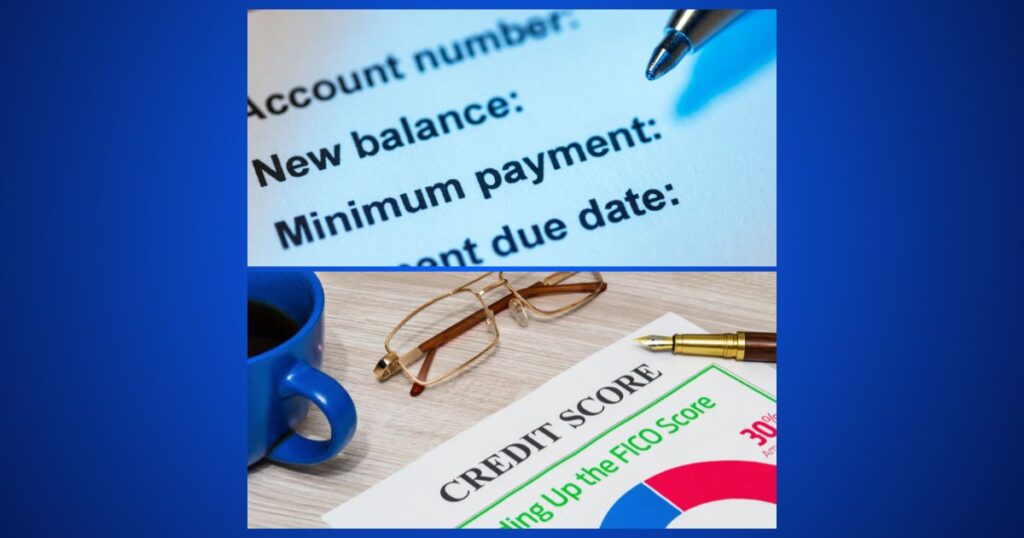The reality behind the minimum payment
Once you receive your credit card statement, the minimum payment may seem like a relief. It is a small number compared to the full balance, and by paying it, you are guaranteed that your account will remain in good condition. On the surface, this seems like a safe approach. After all, paying on time is the biggest factor in building a strong credit score. However, relying on monthly minimum payments will result in hidden results. Many people rely on solutions like debt settlement when they realize that their balances are barely moving despite their long-standing payments. The problem isn’t just paying on time. It’s about how the balance will slowly shrink and how it will affect your credit profile.
Why payment history is useful
One of the most important parts of your credit score is your payment history. The lender wants to see you consistently pay on time, and even the lowest payments count against it. As long as you don’t miss the due date, your payment history will be actively reflected in your credit report. This is why minimum payments are often misunderstood. They protect their scores in one way, but they limit progress in another way. Paying the minimum may keep your history strong, but it rarely improves your financial position overall.
Usage issues
The actual issue with minimum payments comes from the credit utilization rate that measures how much of the available credits you are using. For example, if you have a credit limit of $5,000 and have a balance of $4,000, your usage is 80%. Financial experts usually recommend keeping this number below 30% to maintain or improve your score. If you only make minimum payments, your balance will drop at a very slow pace. As a result, you can drag your score even if your payment history looks perfect.
Cost of interest
Another side effect of paying the minimum is the interest cost. Credit cards usually have much higher interest rates than other forms of debt. By paying only the lowest, most of your payments will be directed towards interest rather than reducing your principal balance. This means that over time you can pay several times the original amount you borrowed. Higher fees not only keep you balanced, but also extend the period when credit usage remains rising, further affecting your score.
How will this affect future opportunities?
Credit scores affect loan approval as well as interest rates, premiums and even rental applications. If you are struggling with high score utilization, you may qualify for less opportunities or end up paying more profits on future loans. Even if you pay on time all the time, the slow pace of paying off your debt can make your profile less attractive to lenders. In the long run, this limits financial flexibility and growth opportunities.
Breaking the cycle
The best way to avoid a minimum payment trap is to pay more than you need each month. Even if you slightly exceed the minimum, you can speed up debt repayment and lower utilization. It is important to create a realistic budget that prioritizes debt reduction. For people with multiple balances, it can be helpful to first focus on the highest interest liability or explore structured strategies such as avalanches and snowman methods. In some cases, consolidating debt into a single loan at a low interest rate can lead to easing and faster repayments.
A practical alternative to minimum payments
If paying a full balance is not realistic, setting a target balance rate to pay each month is a practical option. For example, committing to 10% of balance rather than a minimum will result in faster progress while making payments easier to manage. Automating payments also ensures consistency and removes the temptation to pay only the minimum. These small adjustments can reduce interest costs and improve credit usage much more effectively than just the minimum payment.
Balance of trust use and responsibility
Credit cards are not inherently bad. These are tools that can build or harm your financial health depending on how you use it. Using them wisely means treating them as convenient, not crutches. Keeping your balance low, paying more than the lowest, and planning your purchase with repayment in mind will help you build a healthier financial future. Minimum payments can serve emergency purposes, but should not be a long-term strategy.
Final Thoughts
While making the minimum payments protect your payment history, it rarely reduces your balance or improves your overall financial situation. The repayment rate is slow, so the usage rate is high. This will weigh a credit score and cost you are interested in over time. Both your credit score and financial freedom can be improved by focusing on lower minimum payments, lower balances, and considering strategies such as debt repayment plans and integration. The key is that the minimum payment is not a solution, but a safety net, and choose to approach long-term stability.

